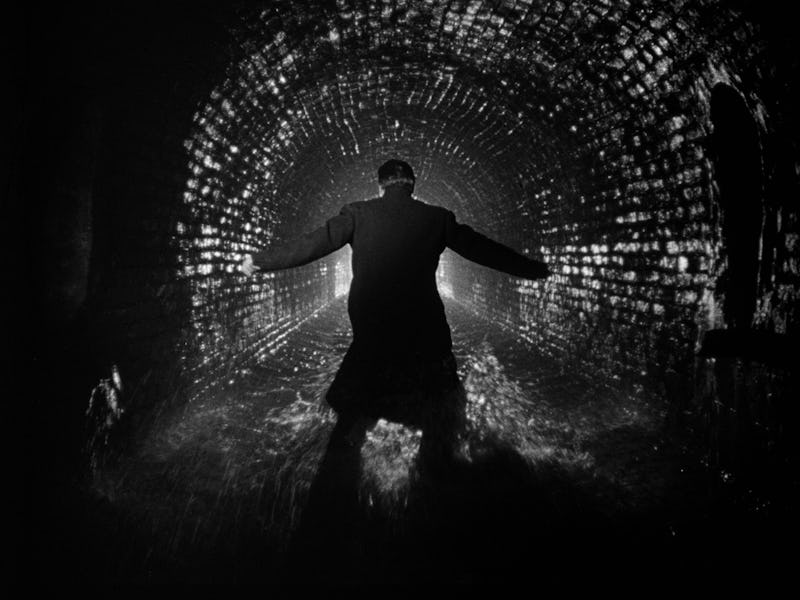The Greatest Film Noir Ever Made Is Getting A Stunning 4K Blu-ray Release
Here’s your chance to revisit The Third Man.

Classic Hollywood has a somewhat unearned reputation for being easy, cheerful viewing, full of giddy musicals and sweet love stories. Film noir of the 1940s and ‘50s cut right through these expectations, delivering cynicism by the boatloads; shadowy mysteries with complex, densely woven plotlines, cunning twists, and devastating femme fatales. There are many brilliant film noirs, but 1949’s British noir The Third Man is the best of a remarkable bunch. The film stars Joseph Cotten and Orson Welles, who previously starred together in another masterpiece, 1941’s Citizen Kane.
With The Third Man now available in a new stunning 4K UHD SteelBook edition with a bevy of bonus features courtesy of Lionsgate Limited, there’s no better time to revisit the greatest noir ever made.
Directed by Carol Reed and written by novelist Graham Greene, The Third Man, takes us to the bustling streets of postwar Vienna, where writer Holly Martins (Joseph Cotten) has arrived from America to start a job with his friend Harry Lime (Orson Welles). There’s just one problem: Martins discovers that Lime is dead.
Martins, broke and frustrated, is determined to find out more about the mysterious circumstances that befell Lime upon his demise. At Lime’s funeral, he meets a man who says Lime wanted to ensure that Martins was taken care of, as well as Anna Schmidt (Valli) an actress and Lime’s lover. Martins finds himself drawn to Schmidt, and the more they speak to one another, the more they realize that they’ve received conflicting reports on Harry’s demise. “I’ve wondered about it a hundred times if it really was an accident,” she tells Martins.
This thought cannot escape Martins. What if someone really murdered his friend? Propelled by a marvelous and sinister script, things get even more complicated: Witnesses disappear, and nobody seems to know the answers to straightforward questions. If you’ve managed to avoid being spoiled on the secrets of The Third Man, I won’t ruin anything here. But suffice it to say the film delivers one impactful surprise after another and something for everyone, from a doomed romance to a nerve-shredding shootout.
The Third Man was shot on location (a rarity in an era largely comprised of studio sets) in postwar Vienna, which lends a tremendous sense of immersion. It makes fantastic use of Vienna, including a dazzling sequence on the Giant Ferris Wheel, which remains a staple of the city. Vienna was a particularly unique place after WWII, as it was split into five separate zones, one for each Allied power, and a city center that was an international zone. This led to a fascinating blend of different languages and communities that couldn’t understand each other. When Martins walks around the city looking for answers, he regularly meets with those he cannot understand, and people speaking to him in English will turn around to speak to someone else in another language, right in front of him.
This dialogue is purposefully not subtitled, a brilliant choice that brings you into Martins’ confusing and unforgiving world. It becomes increasingly clear that Martins is being watched and is a person of considerable interest, and the mystery is kept going strong by not knowing what people are saying. That said, most people speak English in The Third Man, but the occasional spurts of foreign dialogue keep tensions high.
Orson Welles and Joseph Cotten in The Third Man.
Technically, the film is every bit as impressive as the portrait of psychological intrigue afoot. Anton Karas’ hugely memorable score (especially “The Harry Lime Theme”) is performed entirely on a single zither and is upbeat and jaunty while simultaneously delivering a feeling of underlying dread. Robert Kraker’s cinematography favors sharp uneven angles to deliver a sense of unease. It also makes phenomenal use of shadow — shadows whose blacks look especially powerful in 4K — which help power one of the greatest character reveals in cinematic history, and an extraordinarily tense and unforgettable sewer chase sequence.
The Lionsgate Limited 4K UHD release offers a bevy of special features to complement the film, including an audio commentary with Guy Hamilton, Simon Callow, and Angela Allen, a 56-page booklet with essays and on-set photos, a poster featuring the Ferris Wheel, art cards, and featurettes that explore the film’s historical significance, innovations, and impact on contemporary cinema. The film looks and sounds wonderful, and Karas’ score has never sounded better. There’s a reason The Third Man was voted by the British Film Institute as the Greatest British Film of All Time, and this spectacularly performed and intricately layered masterwork is ripe for rediscovery, or your first ever viewing.